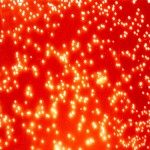Link to Pubmed [PMID] – 33706038
Link to DOI – S0160-4120(21)00091-X10.1016/j.envint.2021.106466
Environ Int 2021 07; 152(): 106466
Water bodies worldwide have proven to be vast reservoirs of clinically significant antibiotic resistant organisms. Contamination of waters by anthropogenic discharges is a significant contributor to the widespread dissemination of antibiotic resistance. The aim of this research was to investigate multiple different anthropogenic sources on a national scale for the role they play in the environmental propagation of antibiotic resistance. A total of 39 water and 25 sewage samples were collected across four local authority areas in the West, East and South of Ireland. In total, 211 Enterobacterales were isolated (139 water, 72 sewage) and characterised. A subset of isolates (n=60) were chosen for whole genome sequencing. Direct comparisons of the water versus sewage isolate collections revealed a higher percentage of sewage isolates displayed resistance to cefoxitin (46%) and ertapenem (32%), while a higher percentage of water isolates displayed resistance to tetracycline (55%) and ciprofloxacin (71%). Half of all isolates displayed extended spectrum beta-lactamase (ESBL) production phenotypically (n = 105/211; 50%), with blaCTX-M detected in 99/105 isolates by PCR. Carbapenemase genes were identified in 11 isolates (6 sewage, 5 water). The most common variant was blaOXA-48 (n=6), followed by blaNDM-5 (n=2) and blaKPC-2 (n=2). Whole genome sequencing analysis revealed numerous different sequence types in circulation in both waters and sewage including E. coli ST131 (n=15), ST38 (n=8), ST10 (n=4) along with Klebsiella ST405 (n=3) and ST11 (n=2). Core genome MLST (cgMLST) comparisons uncovered three highly similar Klebsiella isolates originating from hospital sewage and two nearby waters. The Klebsiella isolates from an estuary and seawater displayed 99.1% and 98.8% cgMLST identity to the hospital sewage isolate respectively. In addition, three pairs of E. coli isolates from different waters also revealed cgMLST similarities, indicating widespread dissemination and persistence of certain strains in the aquatic environment. These findings highlight the need for routine monitoring of water bodies used for recreational and drinking purposes for the presence of multi-drug resistant organisms.

